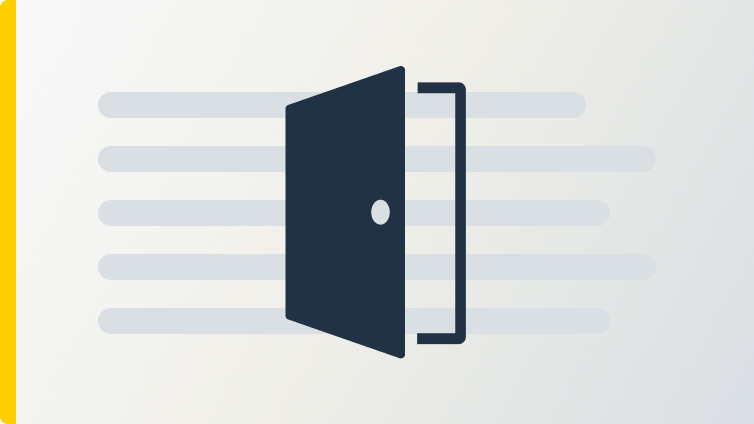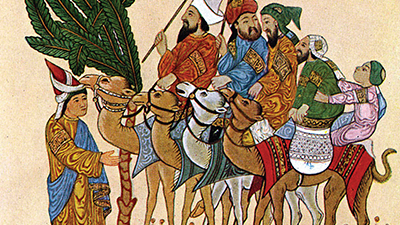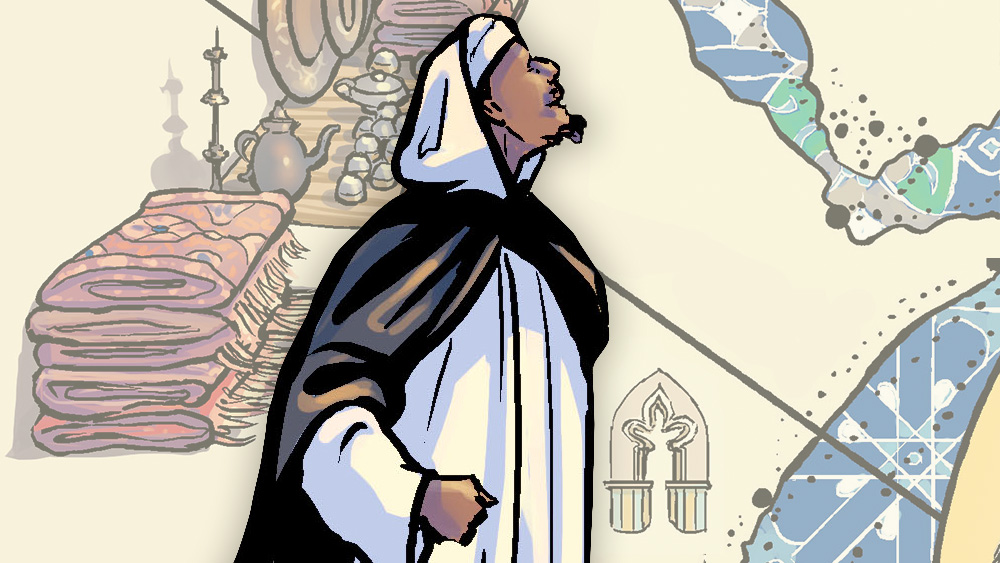The Islamic World
Teacher Resources
Driving Question: How did the spread of Islam influence human communities and networks in Afro-Eurasia during this period?
Today, Islam is a world religion practiced all over the globe, but it didn’t start out that way. Islam began in seventh-century Arabia and quickly spread across Afro-Eurasia through trade, conquest, and cultural interactions. In many areas, it formed the basis of a new form of state known as the caliphate. During Europe’s Middle Ages, the Islamic world was experiencing a golden age.
Learning Objectives:
- Examine the extent to which the Islamic world experienced a golden age.
- Analyze how the collapse and recovery of empires affected the spread of belief systems and the expansion of trade networks like the Silk Road.
- Use the historical thinking practice of claim testing to evaluate the spread of Islam along networks of exchange.
Vocab Terms:
- administrative
- bureaucrat
- caravan
- Crusades
- influx
- mosque
- province
Opener: The Islamic World
To teach this lesson step, refer to page 2 of the Lesson 5.5 Teaching Guide.
Talking about belief systems can sometimes be tricky. Check out our OER Project Sensitive Topics in Social Studies Guide for advice for navigating delicate topics.
What do you believe about belief systems? Connect what you know with some of the big ideas in this course.
A New Religion Emerges
To teach this lesson step, refer to page 3 of the Lesson 5.5 Teaching Guide.
Check out the OER Project Video Guide to help you incorporate best practices when using video as part of your teaching.
Today, Islam is one of the largest religions in the world. Explore an article and video to get a better sense of how it began—and how it expanded to shape a vast global empire.
-
Guiding Questions
-
Before you read
Preview the questions below, and then skim the article. Be sure to look at the section headings and any images.
While you read
Look for answers to these questions:
- What are some reasons the Arab armies were successful in conquering surrounding regions under the Rashidun caliphate?
- How did the Umayyad caliphate learn to govern a large and diverse empire?
- What were attitudes toward non-Muslims under Umayyad rule?
- What were attitudes toward women in the caliphate?
- What are some reasons the caliphate broke into several parts between the tenth and thirteenth centuries?
After you read
Respond to this question: Was combining religious and political authority in the caliphate an effective system? Explain your reasoning.
-
Guiding Questions
-
Before you watch
Preview the questions below, and then review the transcript.
While you watch
Look for answers to these questions:
- What are the five pillars of Islam?
- What are hadith?
- How did Islam spread from 750 to 1700?
- What do most historians agree on about early Islam?
- What are important sources of Islamic history for Muslims?
After you watch
Respond to this question: Why do you think understanding Islamic history is important to practicing Muslims?
Key Ideas
Connecting Afro-Eurasia
To teach this lesson step, refer to page 4 of the Lesson 5.5 Teaching Guide.
To go really in-depth on all things claim testing, check out the Claim Testing page on the OER Project website!
Conflict and connections. It sounds like a board game, but it’s also a great way to describe history. Use the materials below to see how Christian-Muslim clashes reveal both.
-
Guiding Questions
-
Before you read
Preview the questions below, and then skim the comic, paying attention to things like prominent colors, shapes, and types of text and fonts. How do you know where to start and in which direction to read? What’s in the gutters (the space between panels)? Who or what is the focus of the comic?
While you read
- Who was Ibn Battuta and why did he leave his home?
- How was Ibn Battuta able to support himself while he traveled?
- What do the quotes from Ibn Battuta’s writing tell you about his experiences while traveling?
- What does the story about Ibn Battua’s interactions with Al-Bushri tell you about the nature of Dar al-Islam during this period?
- How does the artist use art and design to demonstrate Islamic cultural connections during this period?
After you read
Respond to this question: How does this graphic biography of Ibn Battuta support, extend, or challenge what you have learned about the Islamic world?
-
Guiding Questions
-
Before you read
Preview the questions below, and then skim the article. Be sure to look at the section headings and any images.
While you read
Look for answers to these questions:
- What is Dar al-Islam?
- What were some of the cultural and technological innovations of Islamic scholars during this period?
- What were the effects of these innovations in Dar al-Islam?
- Islam experienced a political fragmentation while it also saw a cultural expansion. What does this mean?
- What does Ibn Battuta’s experience on his travels have to tell us about Dar al-Islam?
After you read
Respond to these questions: Does it make sense for historians to define a region based on a shared belief system rather than a single government? Why or why not?
-
Guiding Questions
-
Before you watch
Preview the questions below, and then review the transcript.
While you watch
Look for answers to these questions:
- How did the Crusades’ success affect networks in the Mediterranean world?
- Which European powers benefited the most from the Crusades?
- What evidence do we have that the Crusades impacted both Christian and Islamic culture?
- How did the Crusades affect scholarship in Europe?
- How did this period of exchange lead to the Renaissance and Columbian Exchange?
After you watch
Respond to this question: How does this video change your thinking about the concept of a European “Dark Age”?
Key Ideas
Closer: The Islamic World
To teach this lesson step, refer to page 10 of the Lesson 5.5 Teaching Guide.
Looking for more maps? Check out OER Project’s collection of maps here.
Mapping the spread of Islam across Afro-Eurasia can help you expand your understanding the causes and impacts of the changes you’ve encountered in this lesson.







